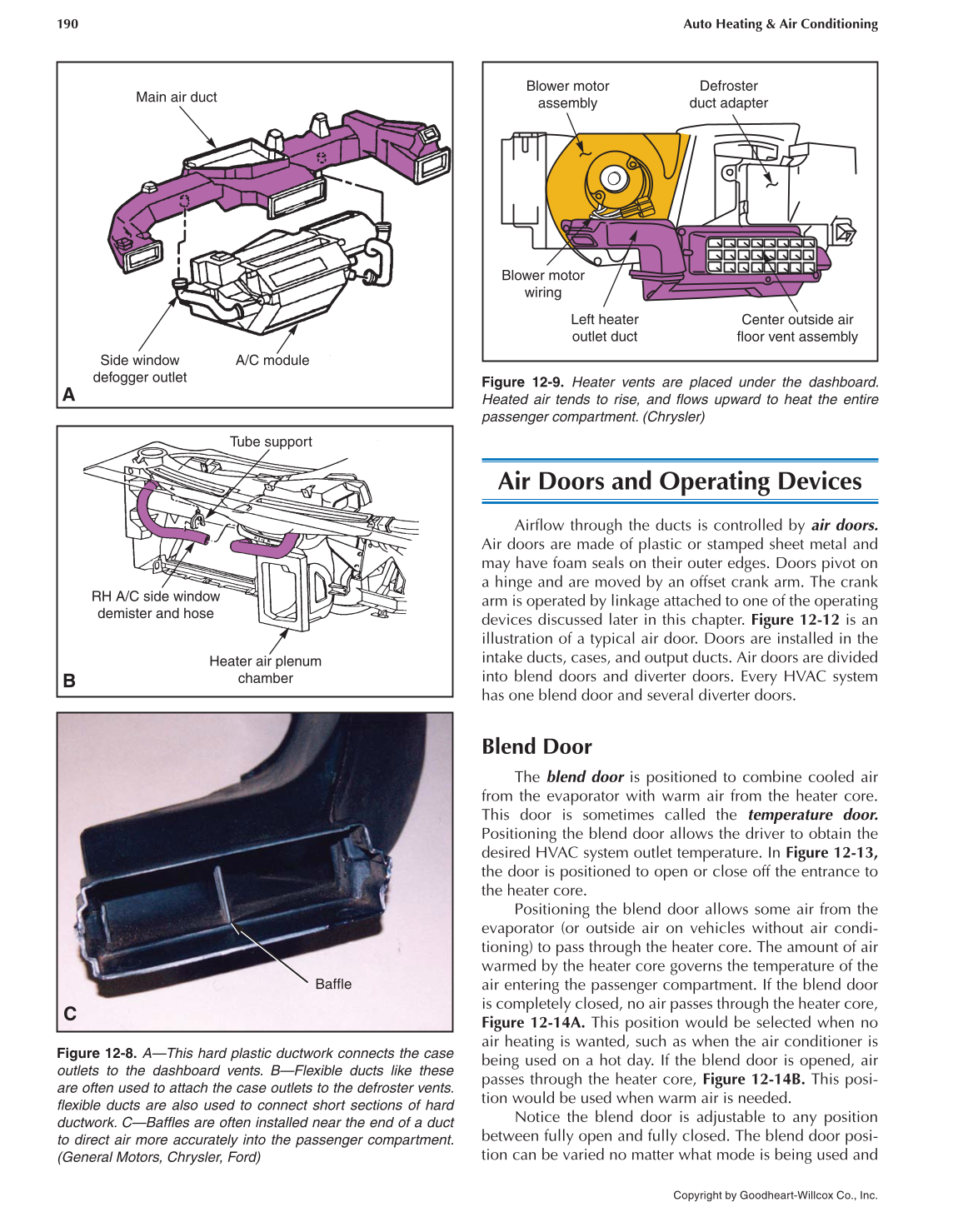190 Auto Heating & Air Conditioning
Copyright by Goodheart-Willcox Co., Inc.
Air Doors and Operating Devices
Airfl ow through the ducts is controlled by air doors.
Air doors are made of plastic or stamped sheet metal and
may have foam seals on their outer edges. Doors pivot on
a hinge and are moved by an offset crank arm. The crank
arm is operated by linkage attached to one of the operating
devices discussed later in this chapter. Figure 12-12 is an
illustration of a typical air door. Doors are installed in the
intake ducts, cases, and output ducts. Air doors are divided
into blend doors and diverter doors. Every HVAC system
has one blend door and several diverter doors.
Blend Door
The blend door is positioned to combine cooled air
from the evaporator with warm air from the heater core.
This door is sometimes called the temperature door.
Positioning the blend door allows the driver to obtain the
desired HVAC system outlet temperature. In Figure 12-13,
the door is positioned to open or close off the entrance to
the heater core.
Positioning the blend door allows some air from the
evaporator (or outside air on vehicles without air condi-
tioning) to pass through the heater core. The amount of air
warmed by the heater core governs the temperature of the
air entering the passenger compartment. If the blend door
is completely closed, no air passes through the heater core,
Figure 12-14A. This position would be selected when no
air heating is wanted, such as when the air conditioner is
being used on a hot day. If the blend door is opened, air
passes through the heater core, Figure 12-14B. This posi-
tion would be used when warm air is needed.
Notice the blend door is adjustable to any position
between fully open and fully closed. The blend door posi-
tion can be varied no matter what mode is being used and
Figure 12-8. A—This hard plastic ductwork connects the case
outlets to the dashboard vents. B—Flexible ducts like these
are often used to attach the case outlets to the defroster vents.
fl exible ducts are also used to connect short sections of hard
ductwork. C—Baffl es are often installed near the end of a duct
to direct air more accurately into the passenger compartment.
(General Motors, Chrysler, Ford)
Baffle
C
RH A/C side window
demister and hose
Heater air plenum
chamber
Tube support
B
Main air duct
Side window
defogger outlet
A/C module
A
Figure 12-9. Heater vents are placed under the dashboard.
Heated air tends to rise, and fl ows upward to heat the entire
passenger compartment. (Chrysler)
Blower motor
assembly
Blower motor
wiring
Left heater
outlet duct
Defroster
duct adapter
Center outside air
floor vent assembly
